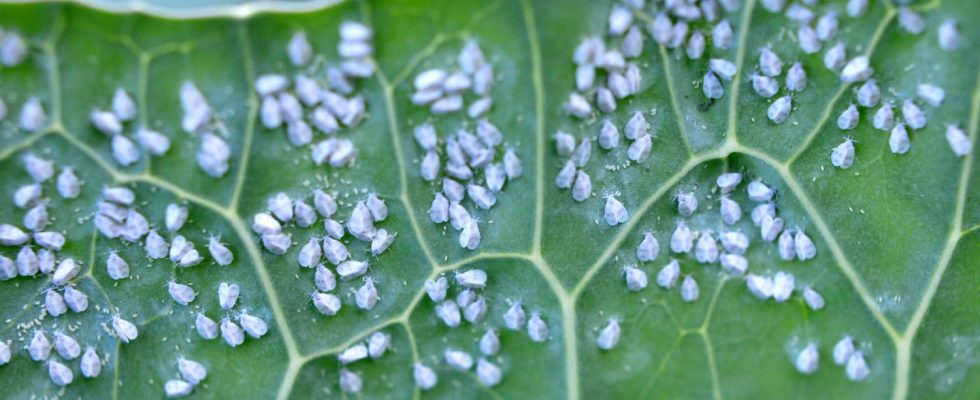Whitefly season will soon begin. Keep your eyes peeled now and act to avoid the invasion and have pretty plants.
Whiteflies, often called whiteflies because of their appearance, are common pests that can cause considerable damage to indoor and outdoor plants. You may have already seen them in your garden, or on your houseplants. These little creatures, although small, can multiply quickly and infest your plants at the end of winter. It is essential to act now to prevent a serious infestation and protect your plants.
It is very easy to recognize whiteflies. They are often compared to midges due to their small size and the fact that they fly. The difference ? They are white in color. If you disturb them by lifting a leaf, they will fly about 40 centimeters from your plant and return to land there a few seconds later. Harmless to you, these little white flies can nevertheless cause serious damage to your plants in three ways.
Whiteflies feed on plant sap by inserting their oral stylet into plant tissue. As a result, they weaken plants and can cause stunted growth, yellowing of leaves, or even death of the plant if the infestation is not controlled. In addition, whiteflies secrete honeydew, a sweet, sticky and transparent substance, which promotes the development of sooty mold, a black fungus that can cover leaves and hinder photosynthesis. Finally, they can transmit phytoviruses to your plants, such as the mosaic virus.
We must therefore act quickly at the slightest suspicion and implement a strategy to combat whiteflies. For small infestations, you can isolate the affected plant and manually remove the pests using a jet of water or a cloth dampened with insecticidal soap or horticultural oil. These products are effective in eliminating whiteflies by suffocating them. Be sure to follow label directions to avoid damaging your plants. A word of advice, move your plants at night, because these little white flies are diurnal and do not fly when it is dark. This way they will stay on the plant while moving.
You can also use their weakness to trap them. Whiteflies are attracted to the color yellow. By placing yellow sticky traps near your plants, you can catch flying adults and reduce the population. Unfortunately, this solution only affects adults who fly. The nymphs do not fly and remain stuck under the leaves. The operation must therefore be repeated every four days, as the nymphs molt into adults.
Now you can implement preventive measures to avoid future infestations in late winter and early spring. Inspect your plants regularly, maintain an environment with appropriate humidity levels, and avoid excessively high temperatures (whiteflies thrive in hot, dry conditions). Before introducing new plants to your garden or home, be sure to inspect them carefully and quarantine them for a few weeks to avoid introducing whiteflies or other pests to your other plants.
